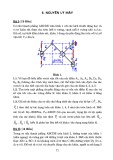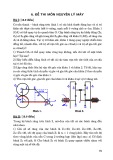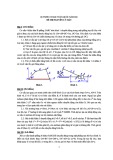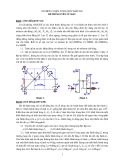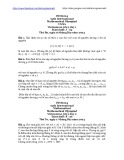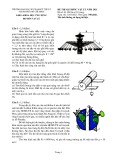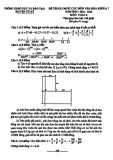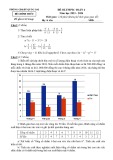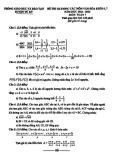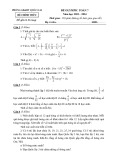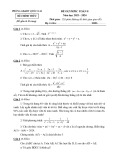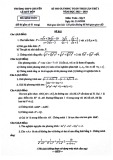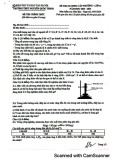PART 2. For questions 51 - 60, read the following passage and decide which option A, B, C,
or D best fits each of the questions. (1.0 pt)
SURFACE WATER AND GROUND WATER
Ensuring the reliability and purity of the water supply is one of the more significant
challenges facing an ever growing world population. Unfortunately, only about 3% of the
world’s total water supply is fresh; the rest is sea water and is unusable for most of our
purposes. Furthermore, of that 3%, three fourths are largely inaccessible because it exists as
frozen ice locked in the polar ice caps or as glaciers high in mountains. The remaining
percentage of fresh water that is available for human use exists in two forms: surface water
and ground water.
Surface water is found in rivers, lakes, and man-made reservoirs fad by either rainfall
or snowmelt. Surface water makes up nearly 80% of all the water utilized by humans,
primarily due to its accessibility. Nearly every river or lake in the world contains one or more
pumping stations to divert a portion of its flow to nearby population centers. However,
surface water supplies present several disadvantages. First, surface water is easily polluted.
Chemical pollution from the air enters surface water in the form of rain, and ground pollution
is either dumped directly into lakes and rivers or washed into them by rainwater. In addition,
biological pollution caused by the dumping of raw sewage into a water source, can lead to
dangerous levels of bacteria. Another problem is relying on surface water is that its supply is
highly variable. Water levels in lakes and rivers can fall drastically in periods of severe
drought. In places that are prone to extended dry periods, such as Australia or much of
California, some rivers are even known to occasionally run dry due to a combination of
drought and overuse.
The other primary source of fresh water is ground water. Although ground water is
estimated to be as much as 50 times more abundant than surface water, it constitutes only
20% of all the fresh water used by humans, and much of this usage occurs in rural areas. This
is a reflection of the relative difficulty in obtaining ground water. Ground water exists in
underground deposits known as aquifers, layers of porous rock in the Earth. As rainwater
sinks into the ground it eventually reaches the aquifer where it is absorbed, much as a kitchen
sponge absorbs water.
To obtain ground water, a well must be drilled down to the level of the aquifer, and
then the water must be pumped to the surface. Aquifers occur at different depths in different
areas, and the deeper the aquifer, the more difficult and more expensive it is to extract its
water. Furthermore, if water is taken from an aquifer at a higher rate than it is recharged
naturally, its level will drop, necessitating ever deeper wells. This also creates problems with
ground stability. As water is drained out of an aquifer, the ground naturally tends to sink and
compress, leading to greater risk of subsidence and landslides. Since aquifers are fed through
a slow acting system of drainage, they have much slower recharge rates than surface water
resources and are easily overtaxed. Therefore, ground water is generally only used when
surface water is unavailable, even though ground water is far more abundant.
Like surface water, ground water can also become polluted, although not as easily. The
soil that water sinks through before reaching the aquifer acts as a natural filter, leaching out









